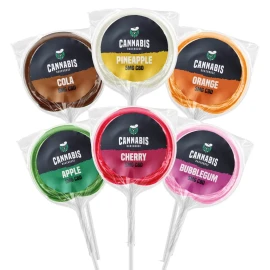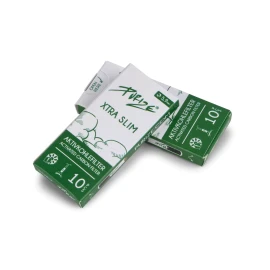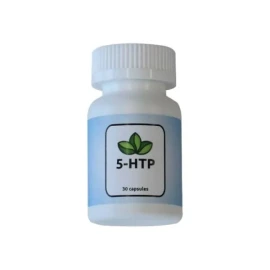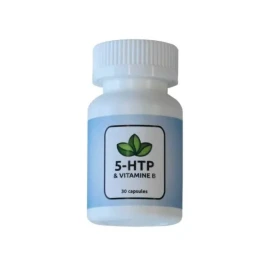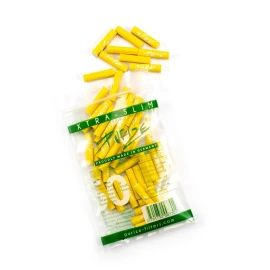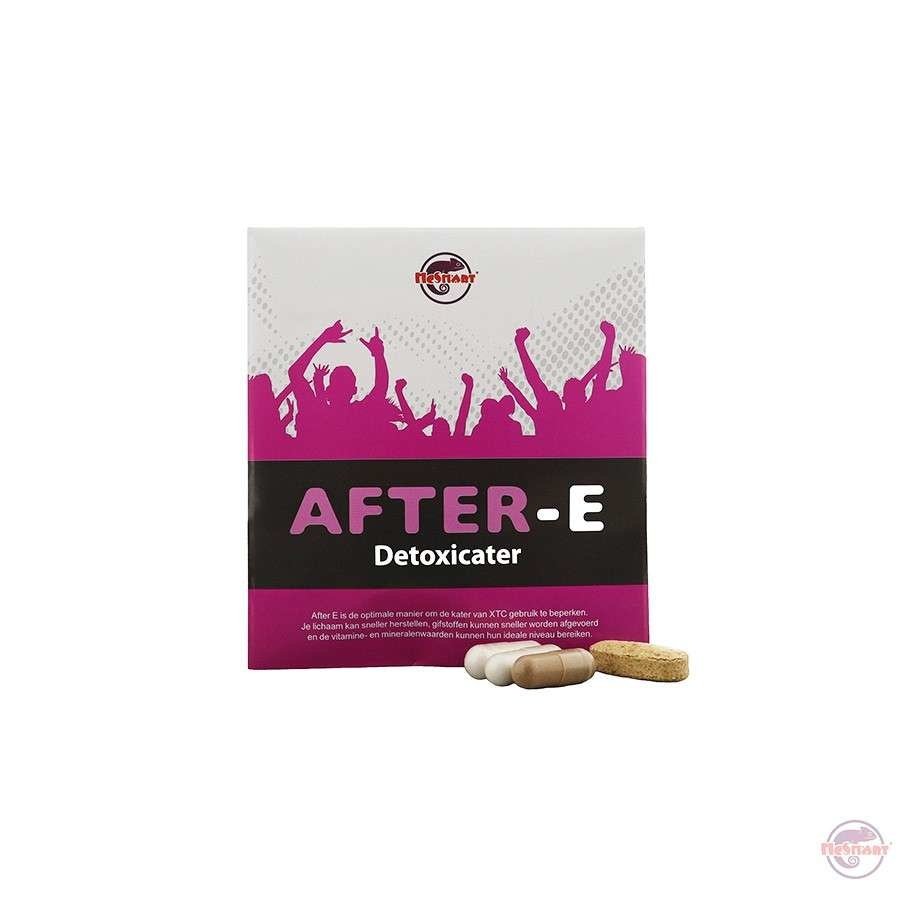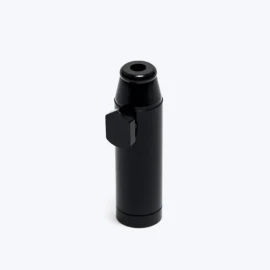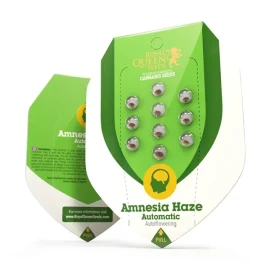CBD Lolly
4,00 €
Quick Overview
CBD lollipops offer a convenient, precisely-dosed way to consume cannabidiol in candy form. These hard candies provide non-psychoactive wellness support for stress, sleep, and minor discomfort with slower onset but longer-lasting effects than other methods. Always verify third-party lab testing and start with low doses.
What Are CBD Lollipops?
CBD lollipops are hard candies infused with cannabidiol (CBD), a non-psychoactive compound derived from hemp plants. Unlike traditional cannabis products, these lollies contain less than 0.3% THC, ensuring no intoxicating effects while delivering the potential wellness benefits of CBD.
These confections come in various formulations including full-spectrum (containing trace amounts of other cannabinoids), broad-spectrum (multiple cannabinoids without THC), and CBD isolate (pure CBD only). Available options include sugar-free varieties using natural sweeteners like stevia or erythritol, vegan formulations, and an array of flavors from citrus to berry.
The candy format provides several advantages over other CBD delivery methods. Each lollipop contains a predetermined amount of CBD, typically ranging from 5mg to 50mg per piece, eliminating guesswork in dosing. The hard candy slowly dissolves in the mouth, allowing for partial absorption through oral mucosa while the remainder enters the digestive system.
Manufacturing processes vary, with premium products using CO2 extraction methods and pharmaceutical-grade ingredients. Quality lollipops undergo rigorous testing for potency, pesticides, heavy metals, and microbial contaminants, with results documented in Certificates of Analysis (COAs).
How CBD Lollipops Work: Absorption and Effects
CBD lollipops utilize multiple absorption pathways, creating a unique pharmacokinetic profile compared to other consumption methods. As the candy dissolves, CBD enters the bloodstream through two primary routes: sublingual absorption through mouth tissues and gastrointestinal absorption after swallowing.
Initial absorption occurs through the oral mucosa, where CBD molecules pass directly into capillaries beneath the tongue and cheek tissues. This sublingual route bypasses first-pass liver metabolism, allowing faster onset and higher bioavailability for the portion absorbed this way. However, the majority of the CBD in lollipops follows the digestive pathway.
The swallowed portion travels through the stomach and intestines, where it undergoes first-pass metabolism in the liver. This process converts CBD into various metabolites, reducing overall bioavailability to approximately 6-20% of the original dose. The exact percentage depends on individual factors including metabolism, body composition, and stomach contents.
Onset times typically range from 30 minutes to 2 hours, with peak effects occurring 1-4 hours after consumption. Duration can extend 4-8 hours, making lollipops suitable for sustained relief throughout the day or night. Factors affecting absorption include candy dissolution rate, fat content consumed with the lollipop, and individual metabolic differences.
The gradual dissolution creates an extended-release effect, with CBD entering the system over 10-20 minutes rather than all at once. This prolonged absorption may contribute to more sustained effects compared to quickly-absorbed methods like vaping or fast-dissolving tinctures.
Scientific Evidence and Research
Current research on CBD’s effects provides moderate evidence for certain applications, though more clinical trials are needed to establish definitive therapeutic protocols. The existing body of evidence suggests potential benefits for anxiety, sleep disturbances, and certain types of pain, though individual responses vary significantly.
Anxiety and stress management represent the most promising areas of research. Multiple studies indicate CBD may modulate the endocannabinoid system’s response to stress, potentially reducing cortisol levels and promoting relaxation. However, optimal dosing remains unclear, with effective amounts ranging from 25mg to 600mg in different studies.
Sleep support shows mixed but encouraging results. Research suggests CBD may help with sleep onset and quality, particularly when sleep disturbances stem from anxiety or stress. The compound appears to interact with receptors involved in sleep-wake cycles, though more research is needed to understand long-term effects and optimal timing.
Pain management studies focus primarily on chronic conditions, with modest evidence supporting CBD’s anti-inflammatory and analgesic properties. The mechanism likely involves interaction with vanilloid receptors and modulation of inflammatory pathways, though clinical trials specifically examining CBD lollipops remain limited.
Importantly, the research landscape continues evolving. Most studies examine isolated CBD or full-spectrum extracts rather than candy formulations specifically. Bioavailability differences between administration methods mean results from studies using other delivery systems may not directly translate to lollipop effects.
Potential Benefits and Use Cases
CBD lollipops serve various wellness applications, with users reporting benefits across multiple areas of daily life. Understanding typical use cases helps inform appropriate product selection and dosing strategies.
Stress and Anxiety Management: Many users incorporate CBD lollipops into their daily routine for ongoing stress support. A typical approach involves consuming a 10-25mg lollipop during high-stress periods or as part of a morning wellness routine. The slow onset makes this method suitable for anticipating stressful situations rather than acute anxiety episodes.
Sleep and Relaxation: Evening use represents another common application, with users taking 15-30mg CBD lollipops 1-2 hours before bedtime. The extended duration aligns well with sleep needs, potentially supporting both sleep onset and quality throughout the night. Sugar-free options are preferable for nighttime use to avoid dental concerns.
Exercise Recovery: Fitness enthusiasts often use CBD lollipops post-workout for potential anti-inflammatory effects. Typical doses range from 20-40mg, consumed within 30 minutes of exercise completion. The convenience factor makes lollipops particularly appealing for gym use compared to oils or capsules.
Travel and Social Situations: The discrete nature and predetermined dosing make CBD lollipops popular for travel anxiety or social stress. Airport security poses no issues for hemp-derived products under 0.3% THC, and the candy format appears non-medicinal in social settings.
Workplace Wellness: Some professionals use low-dose CBD lollipops (5-15mg) during particularly demanding work periods. The subtle consumption method and non-intoxicating effects make this feasible in professional environments where other CBD products might seem inappropriate.
Safety Profile and Potential Side Effects
CBD demonstrates a favorable safety profile in most users, though understanding potential side effects and interactions remains crucial for responsible use. The World Health Organization notes that CBD is generally well-tolerated, but individual responses vary.
Common side effects include drowsiness, particularly at higher doses or when combined with other sedating substances. Dry mouth occurs frequently, as CBD can temporarily reduce saliva production. Gastrointestinal effects like mild diarrhea or appetite changes may develop, especially during initial use or with higher doses.
Drug interactions represent a significant consideration. CBD inhibits certain liver enzymes (CYP450 family) responsible for metabolizing many medications. This can alter blood levels of prescription drugs including blood thinners, seizure medications, and some antidepressants. Anyone taking prescription medications should consult healthcare providers before using CBD products.
Liver enzyme elevation has been observed in some studies, particularly with high-dose CBD use. While this typically occurs at doses much higher than those in lollipops, individuals with liver conditions should exercise additional caution and seek medical guidance.
Special populations require particular attention. Pregnant and nursing individuals should avoid CBD products due to insufficient safety data. Children should never have access to CBD lollipops, both for safety reasons and because the candy format poses an accidental ingestion risk.
The sugar content in regular lollipops may concern diabetics or those monitoring blood glucose. Sugar-free alternatives using erythritol or stevia provide options, though some sugar substitutes can cause digestive upset in sensitive individuals.
Proper storage becomes critical with candy-format CBD products. Child-resistant packaging and secure storage prevent accidental consumption by children or pets, who may be attracted to the candy appearance and flavoring.
Quality Standards and Lab Testing
Third-party laboratory testing represents the gold standard for CBD product verification, providing essential information about potency, purity, and safety. Understanding how to interpret Certificates of Analysis (COAs) empowers consumers to make informed purchasing decisions.
A comprehensive COA should include cannabinoid potency testing, confirming the actual CBD content matches label claims within acceptable margins (typically ±10%). THC testing ensures compliance with federal limits, particularly important for those requiring THC-free products for employment or personal reasons.
Contaminant testing screens for potentially harmful substances including pesticides, heavy metals, residual solvents, and microbial contaminants. Premium manufacturers test for extensive pesticide panels, with non-detect results preferred. Heavy metals testing should show levels well below FDA action limits for lead, cadmium, mercury, and arsenic.
Microbial testing identifies harmful bacteria, yeast, and mold that could compromise product safety. Acceptable limits vary by state regulations, but premium products maintain stricter internal standards than minimum requirements.
When reviewing COAs, verify the testing date matches recent production batches rather than outdated results. The laboratory conducting tests should be ISO-accredited and independent from the manufacturer. QR codes or batch number verification systems help confirm authenticity.
Red flags include missing COAs, internal-only testing, results that seem too perfect (all zeros), or vague “clinical grade” marketing language without substantiation. Legitimate manufacturers proudly display testing results and provide easy access to current COAs.
Extraction methods also impact quality. CO2 extraction produces cleaner products compared to solvent-based methods, though both can yield quality results when properly executed. Supercritical CO2 extraction is considered the premium standard for CBD isolation.
Dosing Guidelines and Usage Instructions
Effective CBD dosing requires individual experimentation within safe parameters, as optimal amounts vary based on body weight, metabolism, intended effects, and personal sensitivity. Starting conservatively and adjusting gradually helps identify the minimum effective dose while avoiding unwanted effects.
Beginner Protocol: New users should begin with 5-10mg CBD per day, consuming the lollipop slowly over 15-20 minutes for optimal absorption. Wait at least 2-3 hours before considering additional doses, as peak effects may take time to manifest. Continue this dose for 3-5 days before increasing.
Dose Escalation: If desired effects don’t occur at the starting dose, increase by 5mg increments every few days. Most users find effective doses between 15-30mg for general wellness applications, though some may require higher amounts for specific concerns.
Timing Considerations: For stress management, consume CBD lollipops 30-60 minutes before anticipated stressful situations. Sleep support typically requires consumption 1-2 hours before bedtime to align peak effects with sleep onset. Consistency in timing helps establish routine and predictable effects.
Frequency Guidelines: Daily use may provide cumulative benefits, though some prefer as-needed consumption. Regular users often split doses throughout the day rather than taking larger single amounts. Weekend breaks can help maintain sensitivity and prevent tolerance development.
Special Considerations: Older adults should start with lower doses due to potentially slower metabolism. Individuals with liver conditions may process CBD differently and should consult healthcare providers. Body weight influences dosing, with larger individuals typically requiring higher amounts for equivalent effects.
Interaction Timing: Avoid consuming CBD lollipops with high-fat meals initially, as this can significantly increase absorption and intensity. Once familiar with effects, users can strategically combine with fats to enhance bioavailability when desired.
Legal Status and Compliance
CBD legality varies significantly across jurisdictions, creating a complex regulatory landscape that consumers and retailers must navigate carefully. Understanding current laws helps ensure compliant purchasing and use while avoiding legal complications.
Federal United States: The 2018 Farm Bill legalized hemp-derived CBD containing less than 0.3% THC at the federal level. However, the FDA prohibits adding CBD to food products or marketing it as a dietary supplement. This creates a regulatory gray area where CBD lollipops exist in legal limbo at the federal level.
State Regulations: Individual states maintain varying CBD laws, with some fully embracing hemp products while others impose restrictions or outright bans. States like Colorado, California, and Oregon generally permit CBD sales with proper licensing. More restrictive states like Idaho and South Dakota have stricter policies or prohibition.
International Considerations: European Union regulations classify CBD as a “novel food,” requiring specific authorization for ingestible products. The UK maintains similar novel food requirements post-Brexit. Canada regulates CBD under the Cannabis Act, requiring licensed producers for any CBD products.
Compliance Requirements: Legitimate retailers must verify hemp source documentation, maintain accurate labeling, provide COAs, and implement age verification systems. Marketing claims must avoid medical terminology or disease treatment promises, focusing instead on general wellness language.
Interstate Commerce: Shipping CBD products across state lines remains federally legal for compliant hemp products, though individual state laws may restrict importation or possession. Consumers should verify local regulations before ordering online.
Employment Considerations: While unlikely, full-spectrum CBD products may cause positive drug tests due to trace THC content. Individuals subject to drug testing should choose THC-free isolate products and maintain COA documentation.
Banking and Payment: Many financial institutions restrict CBD transactions, leading to payment processing challenges for retailers. This regulatory uncertainty affects industry development and consumer access.
Responsible Marketing and Consumer Protection
The CBD industry’s rapid growth has highlighted the need for ethical marketing practices that protect consumers while providing accurate product information. Responsible companies prioritize transparency and education over sensational claims.
Child Safety Measures: CBD lollipops pose unique risks due to their candy format and appeal to children. Responsible manufacturers use child-resistant packaging, plain labeling that doesn’t resemble traditional candy, and clear adult-only warnings. Retailers should implement strict age verification and maintain secure display practices.
Marketing Claims: Ethical companies avoid medical claims about treating, preventing, or curing diseases. Instead, they focus on general wellness language like “promotes relaxation” or “supports daily balance.” All benefits mentioned should reference supporting research or clearly indicate when claims are based on user reports rather than clinical evidence.
Transparency Standards: Responsible brands provide comprehensive product information including extraction methods, hemp sources, testing procedures, and manufacturing locations. Ingredient lists should be complete and allergen warnings clearly displayed.
Pricing Ethics: While premium products command higher prices due to quality investments, ethical companies avoid exploitative pricing or false scarcity marketing. Subscription models should offer clear cancellation policies without hidden fees or difficult opt-out procedures.
Educational Resources: Leading companies invest in consumer education rather than relying solely on marketing claims. This includes dosing guidance, safety information, and realistic expectation setting about CBD effects and timeline.
Social Responsibility: Sustainable sourcing, fair labor practices, and environmental stewardship reflect broader corporate responsibility. Some companies support hemp research or contribute to industry standardization efforts.
Buying Guide: Selecting Quality Products
Choosing premium CBD lollipops requires evaluating multiple factors beyond price and flavor preferences. A systematic approach helps identify products that deliver consistent quality and reliable effects.
Essential Quality Markers: Start by verifying third-party lab testing availability and reviewing recent COAs for potency accuracy and contaminant screening. Confirm CBD content per piece matches your dosing needs and ensure THC levels meet your requirements (non-detect for sensitive users).
Source Verification: Research hemp sources, with domestic cultivation generally providing better quality control and transparency. Organic certification indicates pesticide-free cultivation, though not all quality products carry organic labels due to certification costs.
Manufacturing Standards: Look for companies following Good Manufacturing Practices (GMP) or pharmaceutical-grade production standards. FDA-registered facilities provide additional quality assurance, though this doesn’t constitute FDA approval of the products themselves.
Ingredient Evaluation: Review complete ingredient lists for potential allergens or unwanted additives. Sugar-free options using natural sweeteners like stevia provide alternatives for those monitoring sugar intake. Avoid products with artificial colors or unnecessary chemical additives.
Company Reputation: Established companies with transparent communication channels and responsive customer service generally indicate reliability. Look for clear contact information, return policies, and educational resources that demonstrate product knowledge.
Value Assessment: Compare cost per milligram of CBD rather than per lollipop to evaluate true value. Factor in shipping costs and bulk pricing options for regular users. Extremely low prices may indicate corner-cutting in quality or testing procedures.
Specialized Needs: Vegan formulations exclude gelatin and animal-derived ingredients. Sugar-free varieties accommodate diabetics and those avoiding sugar. High-potency options (25mg+) suit experienced users or those requiring larger doses.
Understanding Certificates of Analysis
Certificates of Analysis represent the most important tool for verifying CBD product quality and safety. Learning to interpret these documents empowers consumers to make informed decisions and avoid potentially problematic products.
Document Basics: A legitimate COA displays the testing laboratory name, accreditation information, test dates, and sample identification that matches product batch numbers. The sample should be tested within recent months, not years, and come from the actual product batch you’re purchasing.
Cannabinoid Panel: This section shows CBD content and confirms THC levels. Look for CBD amounts within 10% of label claims—if a lollipop claims 25mg CBD, the COA should show approximately 22.5-27.5mg. THC should show “ND” (non-detect) or below 0.3% for legal compliance.
Contaminant Testing: Pesticide panels should show non-detect results for harmful chemicals. Heavy metals testing should demonstrate levels well below safety limits for lead, cadmium, mercury, and arsenic. Microbial testing ensures absence of harmful bacteria, yeast, and mold.
Understanding Limits: COAs use terms like LOD (Limit of Detection) and LOQ (Limit of Quantification) to indicate testing sensitivity. “ND” or “BDL” (Below Detection Limit) indicates substances weren’t found at measurable levels, which is ideal for contaminants.
Verification Methods: Legitimate COAs include QR codes or verification systems allowing consumers to confirm authenticity directly with testing laboratories. This prevents fraudulent COA creation and ensures results match actual products.
Red Flags: Avoid products with missing COAs, internal-only testing, or results that seem unrealistic (all perfect zeros). COAs dated years ago or from unknown laboratories raise quality concerns.
Frequently Asked Questions
Do CBD lollipops cause intoxication?
No, properly manufactured CBD lollipops contain less than 0.3% THC, insufficient to produce psychoactive effects. Users experience potential wellness benefits without impairment or altered mental state.
How long before effects become noticeable?
Onset typically occurs 30 minutes to 2 hours after consumption, with peak effects around 2-4 hours. The gradual dissolution provides extended absorption compared to quickly-consumed edibles.
Can CBD lollipops trigger positive drug tests?
Full-spectrum products containing trace THC may theoretically cause positive results, though this is rare with compliant products. THC-free isolate products eliminate this risk entirely.
Are there interactions with prescription medications?
CBD can affect liver enzymes that metabolize many medications, potentially altering drug levels in the bloodstream. Anyone taking prescription medications should consult healthcare providers before using CBD products.
What’s the difference between sugar-free and regular versions?
Sugar-free lollipops use alternative sweeteners like stevia or erythritol, making them suitable for diabetics and those monitoring sugar intake. Effects and absorption remain similar between formulations.
How should CBD lollipops be stored?
Store in cool, dry locations away from direct sunlight and heat. Keep in original packaging with child-resistant features and ensure children and pets cannot access products.
Can children or pregnant women use CBD lollipops?
No, these demographics should avoid CBD products due to insufficient safety data. The candy format poses additional risks of accidental consumption by children.
Why do CBD amounts on COAs sometimes differ from labels?
Natural variation in extraction and testing methods can produce slight differences. Acceptable ranges typically allow ±10% variance, with quality products staying within these parameters.
Making an Informed Decision
CBD lollipops offer a unique combination of convenience, precise dosing, and extended effects that appeal to many wellness-focused consumers. The candy format provides discrete consumption while delivering potential benefits for stress, sleep, and minor discomfort through multiple absorption pathways.
Success with CBD lollipops requires commitment to quality verification, responsible dosing, and realistic expectations. Starting with low doses from reputable manufacturers with transparent testing helps minimize risks while maximizing potential benefits. Regular users often find consistent timing and quality products produce the most predictable results.
The regulatory landscape continues evolving, making it essential to stay informed about local laws and industry developments. As research progresses and standards improve, CBD lollipops may become increasingly refined tools for wellness support.
For those considering CBD lollipops, begin with thorough research, consult healthcare providers if taking medications, and prioritize products with comprehensive third-party testing. The investment in quality products and careful approach to usage often determines the difference between positive experiences and disappointment.
Related Products
Frequently Asked Questions
Everything You Need to Know



